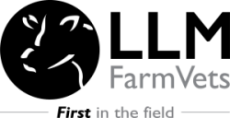Some of you will be in the thick of lambing while others will be hitting the ground running over the coming weeks. Either way, the importance of good hygiene in the lambing shed is hugely important in order to avoid losses, reduce antibiotic use and
labour costs.
Good hygiene practices can go a long way in reducing losses through infections such as watery mouth, joint ill and scours. These infections are caused by bacteria entering the lamb either through, ingestion, the navel and tailing or tagging wounds. Doing the simple things right to ensure good hygiene such bedding pens with plenty of straw is crucial. Attention to detail when cleaning feeding equipment is also important and it’s easily something that can be overlooked when you’re under pressure at lambing time. But taking the time to disinfect teats, tubes, mixing buckets and other utensils will pay dividends in lamb health.
The first step is to make sure your lambing pens are thoroughly cleaned before the ewes come inside to lamb using a DEFRA-approved disinfectant. Once the pen has dried out bed it up with plenty of clean, dry bedding ready for the new occupants. Avoid lambing ewes in small pens to keep bedding as clean and dry as possible. Any obvious wet straw and afterbirth should be cleaned out and fresh, clean straw provided between ewes to reduce mis-mothering and disease issues. Putting lime in the bottom of pens can also keep them dry and minimise potential disease problems.
Lambs are born with very little immunity, so we must provide adequate colostrum and prevent bacteria from getting into contact with them and to give them the best possible start. Colostrum contains antibodies which provide the lambs with immunity. The antibodies that colostrum contains can only be absorbed from the gut in newborn lambs. This ability starts to reduce from 6 hours after birth and is gone by 24 hours. To maximise the effects of colostrum it should ideally be given within the first 2 hours of birth, and for 24 hours after. Ewe colostrum will always contain a lot more antibodies than any powdered colostrum supplement so always try to milk out the ewe first. If this isn’t possible, try other freshly lambed ewes (by 24 hours after lambing, there are very few of the important antibodies left in the colostrum) or use any reserves of frozen colostrum you have available. There is a good awareness that it is inappropriate to routinely use antibiotics and we know that many flocks have made significant progress in reducing their use of oral antibiotics in new born lambs through hygiene, provision of colostrum and good ewe nutrition.
Navels give bacteria direct access to spread inside the newborn lamb. The lamb’s navel should be disinfected when they are born and it is advised to do it again four-to-six hours later again. This reduces the risk of navel infections by disinfecting the umbilicus and dehydrating it and iodine also acts as an antiseptic for bacteria.
Farm vets and flock keepers have been issued advice ahead of the lambing period about the potential shortage of strong iodine (10%) ahead of the 2023 lambing season. Navel dipping should not be avoided due to the benefit it provides to farm hygiene. The following are some useful alternatives available if you can’t access iodine this season.
- Vetericyn Super 7 Plus spray/dip
- Repiderma spray
- 4% chlorhexidine, or a 50/50 mix 4% chlorhexidine and alcohol
Other products that have been used include 70% alcohol (dries the navel but antibacterial effects are short lasting) – mix strong iodine and alcohol for better drying of the navel.
Products with iodine concentrations lower than 7% will be less effective and so are not recommended and the use of tetracycline antibiotic sprays on navels or blanket systemic/oral antibiotics is not appropriate. Ask your vet for more information including advantages and disadvantages of each and use with care.
Key areas to improve hygiene:
- Lambing pens and housing – clean out and disinfect regularly. Ensure there is plenty of clean, dry bedding provided. Removing wet straw and afterbirth will help keep pens clean and fresh, and reduce disease issues. Good hygiene in the lambing area can help prevent the diseases mentioned above.
- Iodine application on the naval – spray or dip the naval as soon as possible after birth, and again a few hours later. This will help prevent infections, such as naval ill or coli getting into the lamb.
- Isolation pens for sick ewes or lambs – separation helps minimise the spread of disease.
- Lamb feeding equipment – ensure all feeding equipment, such as stomach tubes are properly disinfected in between use; using baby bottle sterilising solutions is good practise.
- During lambing – good hygiene during lambing is invaluable for disease prevention; use disposable gloves (easily carried in a pocket!), clean clothes, and wash hands regularly.












Leave A Comment